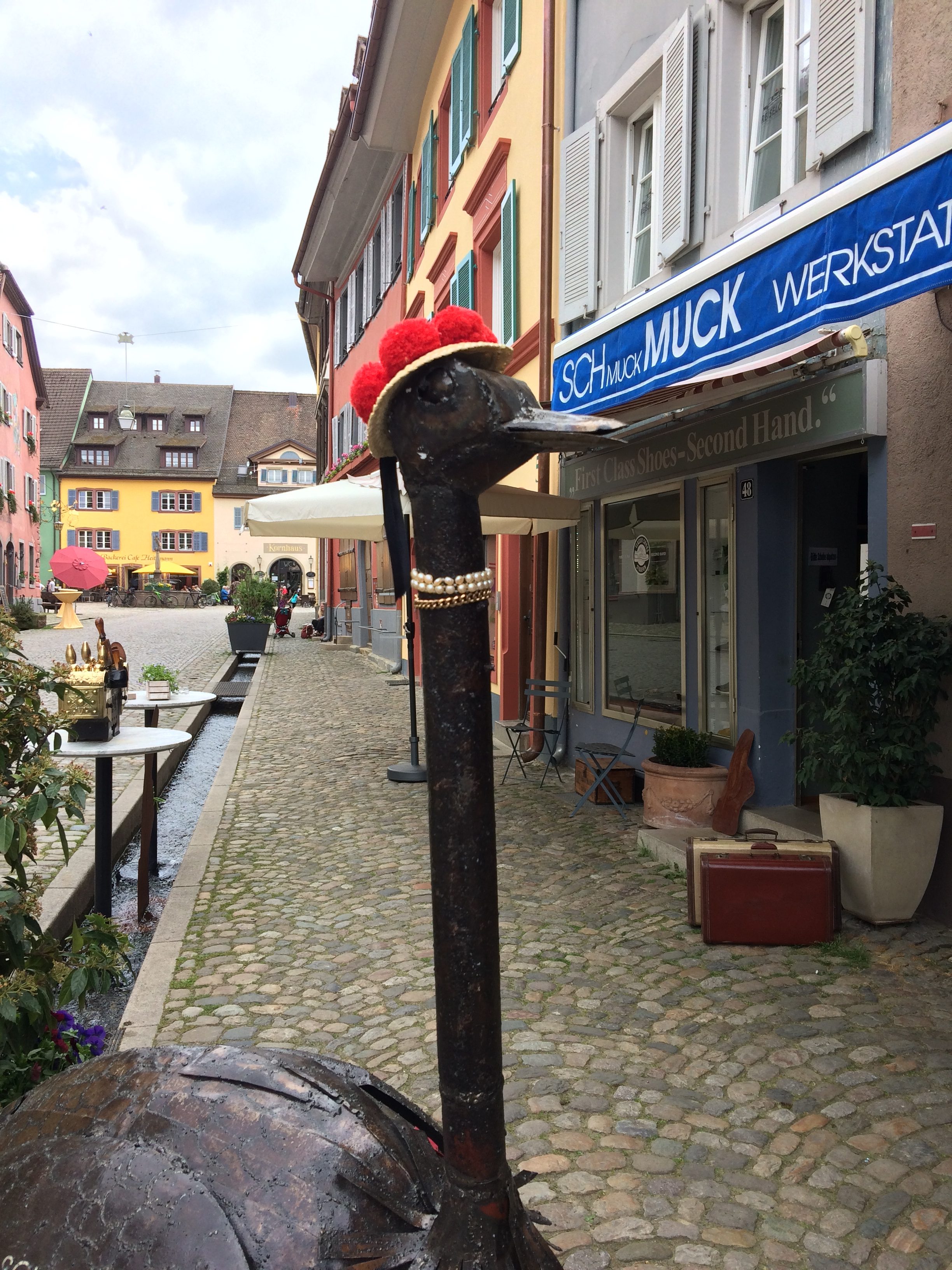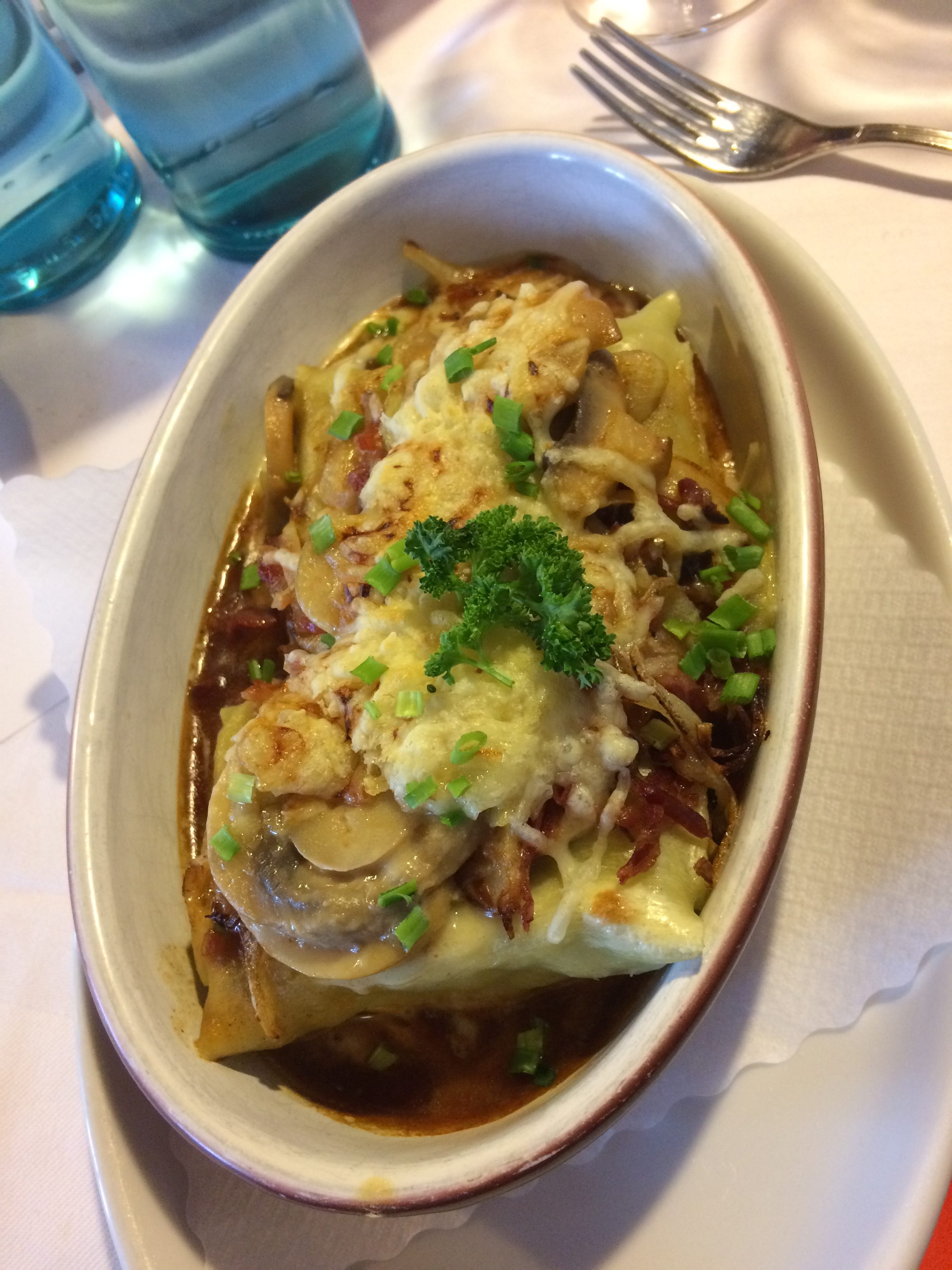As I mentioned in my first blog post, Freiburg is situated in the lower corner of the Black Forest, very close to where France, Switzerland, and Germany intersect. From Freiburg, it’s easy to get to the quintessential Black Forest, to venture into the Badish wine region, or to head into Switzerland to hike in the alps. The Rhine River flows only a short distance to the west, dividing France and Germany.
In this post, I’ll talk about the notable villages around Freiburg that I can visit using only regional transportation, which means it doesn’t cost me anything to get there.

Using my semester ticket for the public transportation, I can go anywhere in the regional transportation network. One charming place is the village of Staufen. To me, Staufen feels like a miniature version of Freiburg. Almost as old, Staufen has the same medieval colorful facades and baechle, just on a smaller scale. The main street is lined with shops and street cafes, and if you wander into residential areas, the houses are just as picturesque.


Staufen is also famous for one legendary citizen- Dr. Faustus. The real-life Faust was an alchemist who lived and worked in Staufen until he died in an accidental explosion while experimenting with ways to turn lead into gold. Because of this, his death very soon turned into a medieval moral legend about a man who sold his soul to the Devil in exchange for worldly goods, but got what was coming to him in the end. The legend inspired the so-called “German Shakespeare” to write a play in which Faust is the titular main character. The house where Faust once lived has a mural depicting the legend on it.

Also in the region are the quintessential Black Forest towns of Triberg, St. Peter’s, and Furtwangen. Triberg is home to many kitschy cuckoo clock shops, the highest waterfall in Germany, and the Black Forest museum. Furtwangen is similarly kitschy and has the German Clock Museum. The cuckoo clock is originally from the Black Forest, and it’s always a fun time to visit one of the museums and see how the clocks work and listen to the different chimes. I can’t say that I exactly recommend trying Black Forest cake- I’ve been disappointed each time I’ve tried it- but there’s also a sense that you can’t not try at least one slice.


St. Peter’s in the Black Forest is also a charming town with one unique feature to distinguish it- the former Benedictine monastery and seminary that features beautiful baroque art and architecture.

Now that the weather’s warmed up, I’ve been exploring the countryside behind my neighborhood, which is the Western-most section of the city. Once I leave the city, there’s miles of farmland and forests, broken up by little villages. Yesterday I had a chance to explore the Opfinger Lake- I have no photos though, because in typical German style, the swimmers were all nude! While I don’t anticipate participating in the Freikörperkultur (“free-body culture”), I plan on going back to swim, especially after my classes are over.

